The season for hot chocolates and snuggly jumpers is fast approaching. As we say goodbye to the leaves on the trees, you may feel like your garden is done for the year or that there isn’t any point starting anything now. Most winter vegetables need to be started earlier in the summer for a continued harvest over the winter months, however, there are many vegetables that still thrive during the winter months, or that can set you up for a bountiful spring.
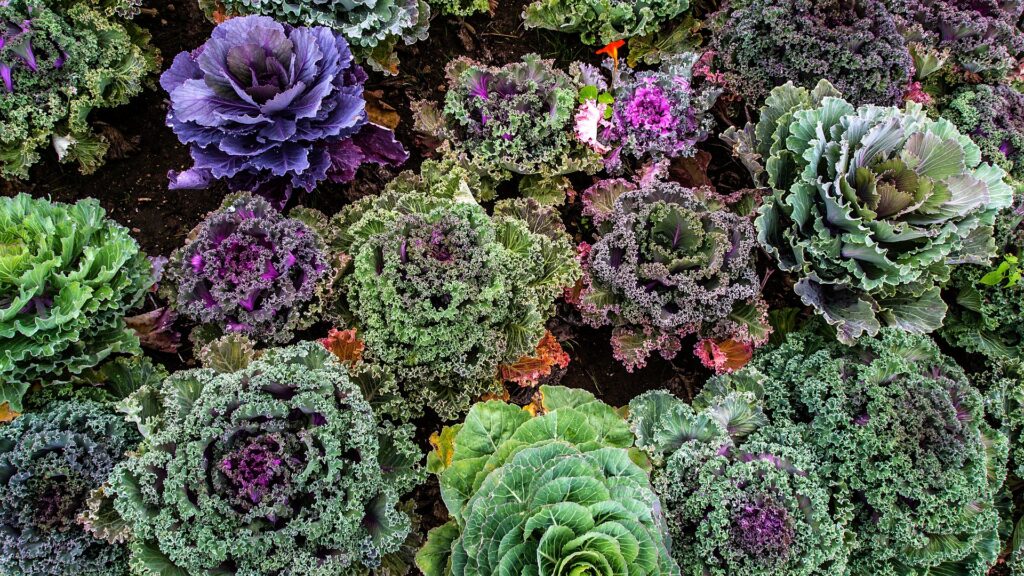
1. Kale, kale wonderful kale!
With all its purported benefits, why wouldn’t you want to grow this beauty (actually, I know why, it has quite a bitter taste!). You can pick and go with kale, meaning you don’t have to wait for the whole plant to grow before you harvest; just take a little bit at a time. That being said, they are very hardy plants and will keep coming back, and I had my last kale plant for two years before I let it flower and took its seeds.
Start inside on a windowsill, in a greenhouse, or polytunnel, then plant in place. It does just as well in pots and can last a long time. It will grow back slower over the winter than the summer, so make sure you don’t take too much off one plant as it still needs some leaves to grow!
2. Beetroot
There are so many uses for beetroot, I’m not sure where to begin! Not only can you eat the root, the leaves and stalks make for a colourful addition to salads or stir fry. And if you fancy getting creative, you can make natural food dye, or even ink from the root!
Beetroot can be planted in place all year round, it doesn’t do as well in pots, but if you just want the leaves you can get away with a medium sized pot. The actual vegetable will grow slowly over the winter, but their leaves will still flourish, so you can pick and go throughout the winter months, and have an early spring crop of beetroots.
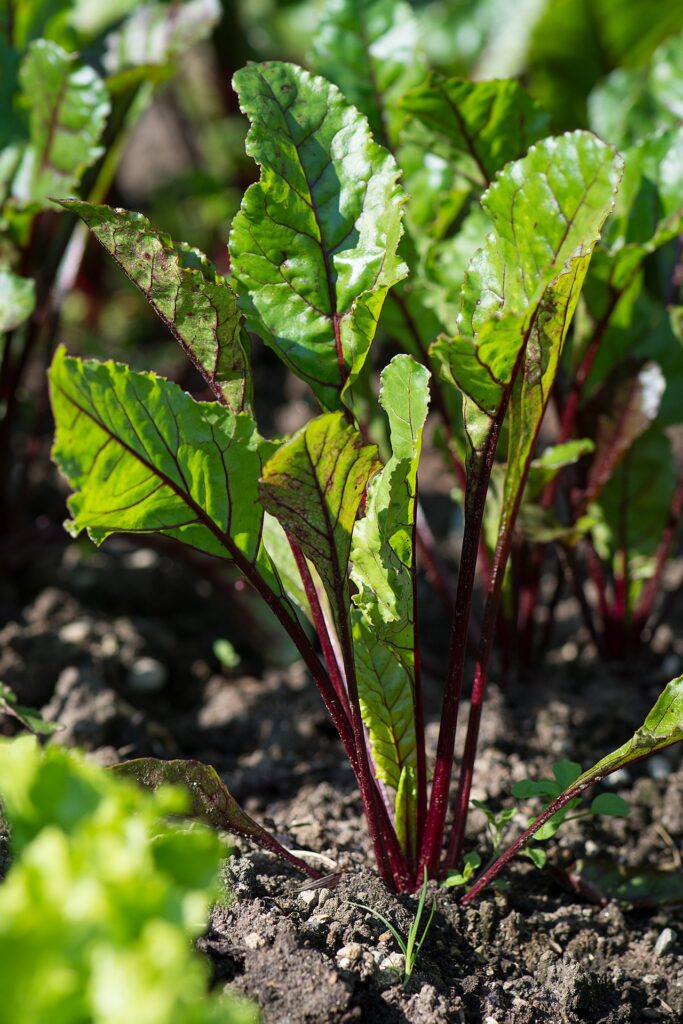
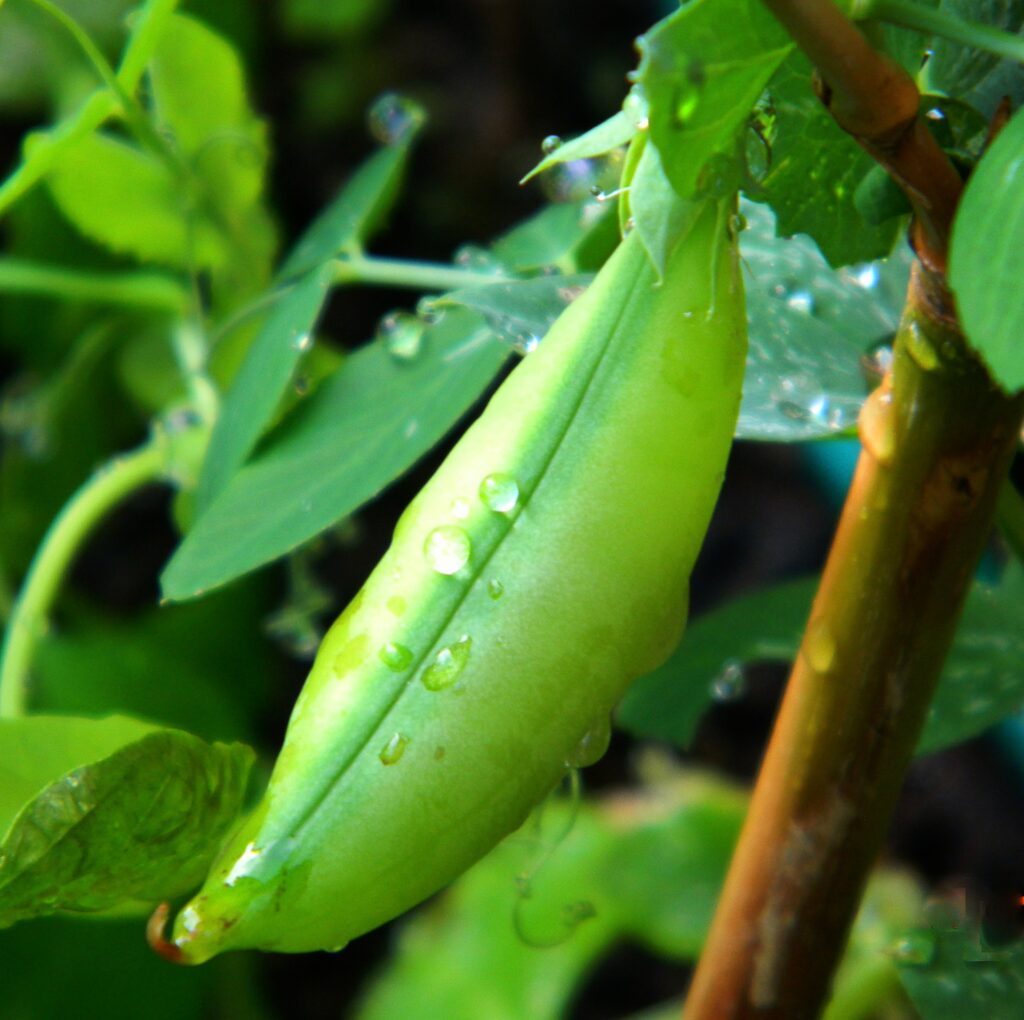
3. Sugar Snap Peas
Sugar snap peas are little green gifts from heaven, and their shoots are one of my favourite additions to salads, they are just as fresh and delicious as the sugar snap peas themselves. Starting sugar snap peas in autumn can give you a superb spring crop. Plant them in pots indoors or out; make sure they have something to climb up; and that you raise them off the ground to prevent mice nibbling away at them if you plant them outside (a couple of bricks will do).
If you want a nice crop in late spring, make sure they stay in colder parts of the garden so that they develop slower, leave in the pot or transplant into the ground in March. If you want more shoots for salad over the winter, put them in the warmer parts of your garden for quicker growth, and take the shoots as you please.
4. Broad Beans
Great for dips, stews, pasta, salads, and they’re packed with vitamins… what can’t a broad bean do! Another super versatile and hardy legume, broad beans germinate quickly, within 2-3 weeks, and will survive the worst of the cold as long as they are planted out of the wind and the soil can drain easily. Start indoors in trays and then move them into medium pots or plant in the ground once the seedlings are looking strong. Cover the top of the soil with straw, mulch or dried grass from the garden, and make sure they have something to climb up pointing them in the right direction if they need encouragement!
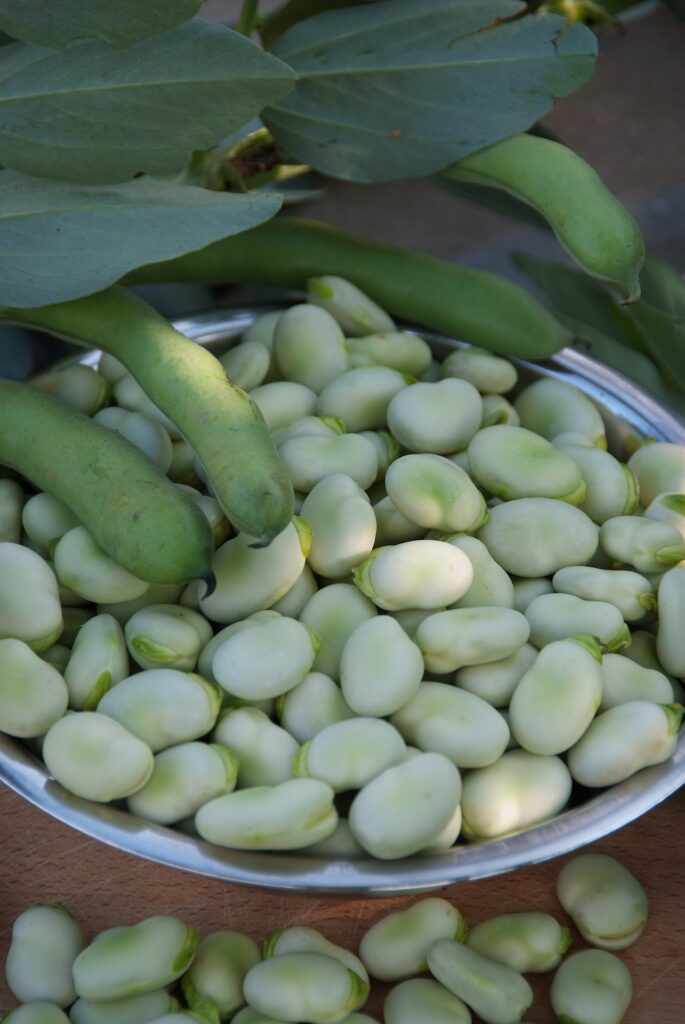
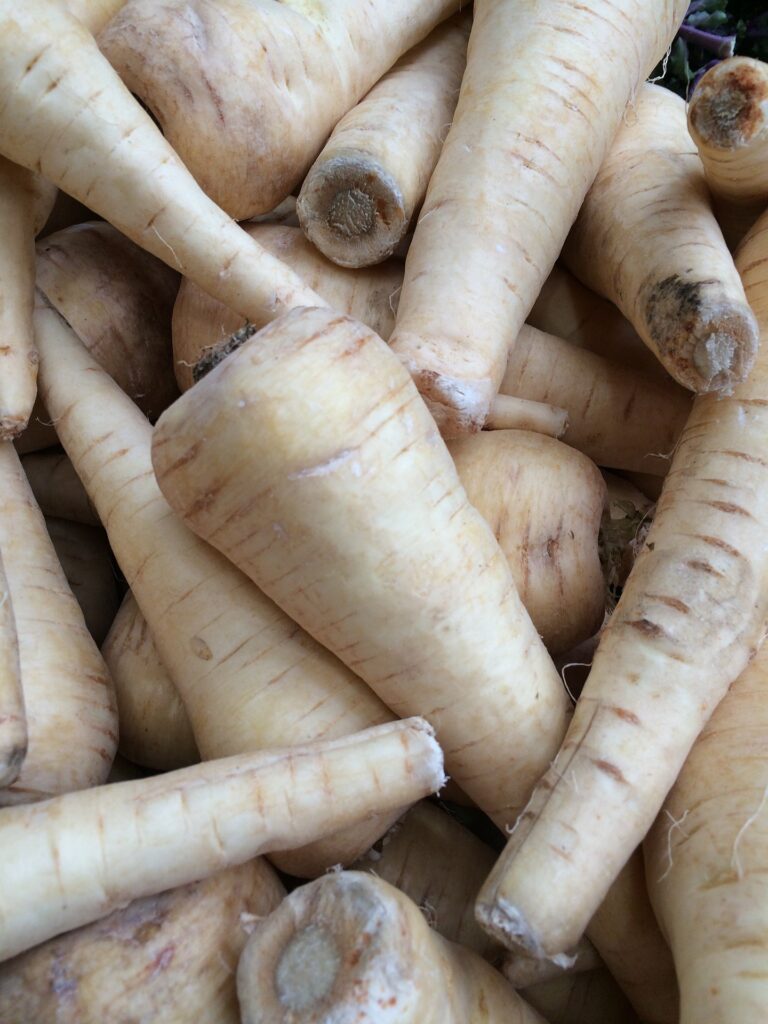
5. Parsnips
Winter roasts are not complete without crispy roast parsnips, aside from being mouth-wateringly moreish, they are also frost resistant, in fact, the frost makes them tastier! For a winter harvest, parsnips need to be sown mid-summer, but planting in September to early October gives a spring crop. Start seedlings inside and wait to transplant until two leaves have grown, they do best in the ground, but you can get away with a big pot. Cover the top layer with straw, dry grass or mulch. As it gets frostier, protect them with a mini-polytunnel, felt or a few layers of cardboard with a bin bag on top and weigh it down at the edges.
They can survive temperatures of down to -4 degrees centigrade (24 degrees fahrenheit), but to give them the best chance it’s better to protect them.